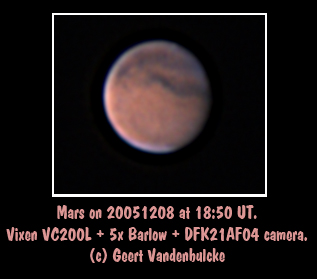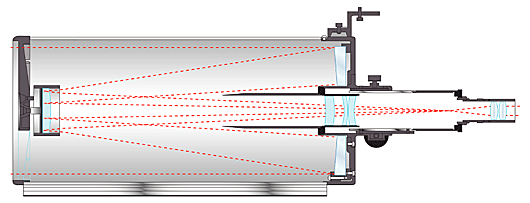
My Vixen VC200L
Vixen has two similar-looking 200 mm telescopes: the VC200L (Vixen Cassegrain) and the VMC200L (Vixen Maksutov Cassegrain). See the VC200L and VMC200L drawings from Vixen below (http://www.vixen-global.com but you can find better info on http://www.vixenamerica.com/StartPage/ ). The VC200 OTA is longer than the VMC200.

The VC200L is a 200 mm f/9 cassegrain system with an aditional corrector inside the primary mirror baffle. This corrector gives an image free of coma, curvature of field, spherical and chromatic aberration. With a custom reducer, the system can be brought to f/6. The OTA of the VC200 is longer than the VMC200 OTA. The primary mirror has a special shape, partly made by a special coating: "a precise sixth-order shape produced by Vixen's High-Precision Poly-Order Aspherical Mirror Molding Technique". This is the same process as used on Vixen's R200SS f/4 newton reflector. So if the primary mirror of these telescopes ever would need re-aluminizing they have to go back to Vixen in Japan...
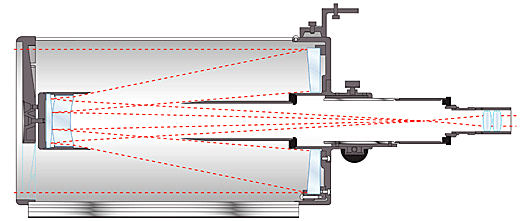 (
(
The VMC200L is a 200 mm f/9.8 cassegrain with a sub-aperture maksutov corrector just in front of the secondary mirror (see more on this design on here: http://www.telescopes.ru/articles/article5.phtml , variations of this design are used in the TAL Klevtsov reflectors and the Orion Optics - UK larger OMC telescopes).
So light passes twice through this corrector. "With two high-precision spherical mirrors this helps to eliminate spherical aberration and yields a sharp image with no hint of false color. This is a telescope suitable for observation of all types of celestial objects and offers excellent performance for both visual planetary eyepiece projection imaging."
Now on to some thoughts about my VC200L (I have never used a VMC200 until now, can't have it all).
The VC200L was once described by somebody as "Vixen's best kept secret for deep-sky imaging". Both the VC and VMC telescopes have a fixed mirror. The primary, secondary and focuser assembly can all be adjusted (three possibilities to get it all wrong ;-)). When I got my VC200L it only needed a very slight adjustment on the primary mirror, I have not touched the other elements up to now. Otherwise the collimation is very stable.
The focuser is a rack-and-pinion type and is somewhat coarse, so critical focusing for imaging is a little difficult, more so at f/6. That is why I substituted one of the focusing knobs by a Mercury Systems Support Fine Focuser 2 which gives a 7:1 reduction (somewhat like the Feathertouch focuser, but the MSS FF-2 is larger, doesn't look near as good as the Feathertouch and is of lesser quality - so it has been removed and is not used anymore). There is enough backfocus available for normal visual or photographic use, however there is less backfocus when using the Vixen f/6 reducer but still I have no problems focusing my SBIG camera.
The secondary support spider is 3 mm thick, so this generates diffraction spike which are noticeable on bright objects such as the planets. This may at first sight wash out detail on planets, but then use a ND filter to attenuate the glare and detail becomes apparent. The diffraction spikes however are a great help during focusing: when out of focus the spikes look double, just adjust focus until the spikes form one thin line and that's it!
As Vixen has its own range of adapters which are not compatible with the widely spread SCT accessories, you may need some additional adapters to mount your camera to the telescope. I did replace the original 2" locking ring with a Baader locking ring of better quality.
Originally the VC200L comes with a Vixen dovetail attached to the tube outer rings. Although convenient this seems not too stable and can give tube flexure. So I removed the Vixen dovetail and use two Vixen tube rings mounted on a Losmandy dovetail.
Star testing.
The inside and outside focus images do not look exactly alike, but this is normal with a compound telescope. The out of focus images are round, sharply defined and crisp and when focusing the image snaps into focus. The in-focus image at high magnification and with good seeing is far better than any I have seen in commercial SCT's up to now (except my custom 250 mm f/10 Opticon SCT I once had). A crisp airy disc surrounded by faint arcs or circles (depending on seeing of course). Below are some inside and outside focus images made at the f/9 focus. These show a little decollimation which was rectified afterwards.
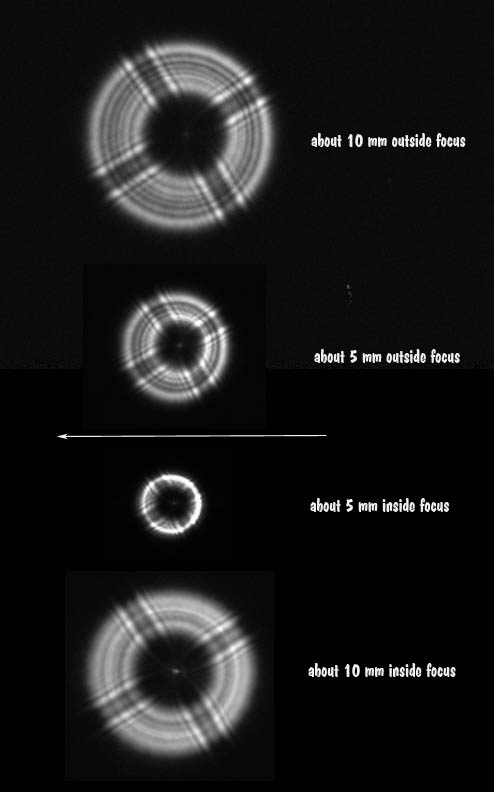
Instrument images.
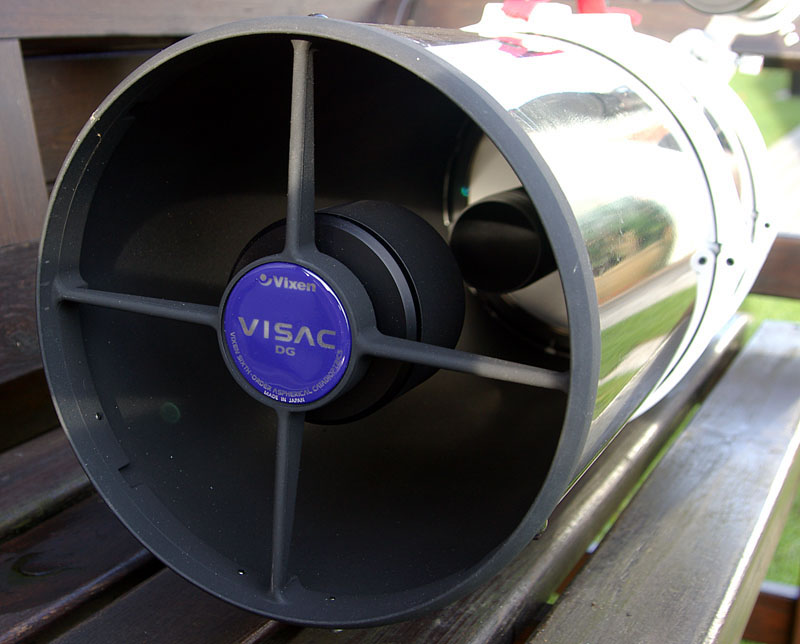
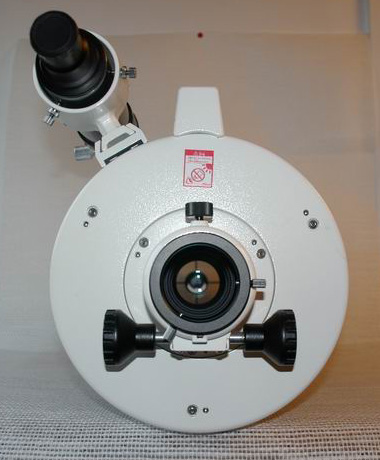
Astro-images
You can see an image of M33 here and an image of the Iris Nebula here.
Allthough not an instrument designed for planetary imaging, I took this Mars image on 8 December 2005, seeing 6/10, transparency 4/5, First Quarter Moon shining:
